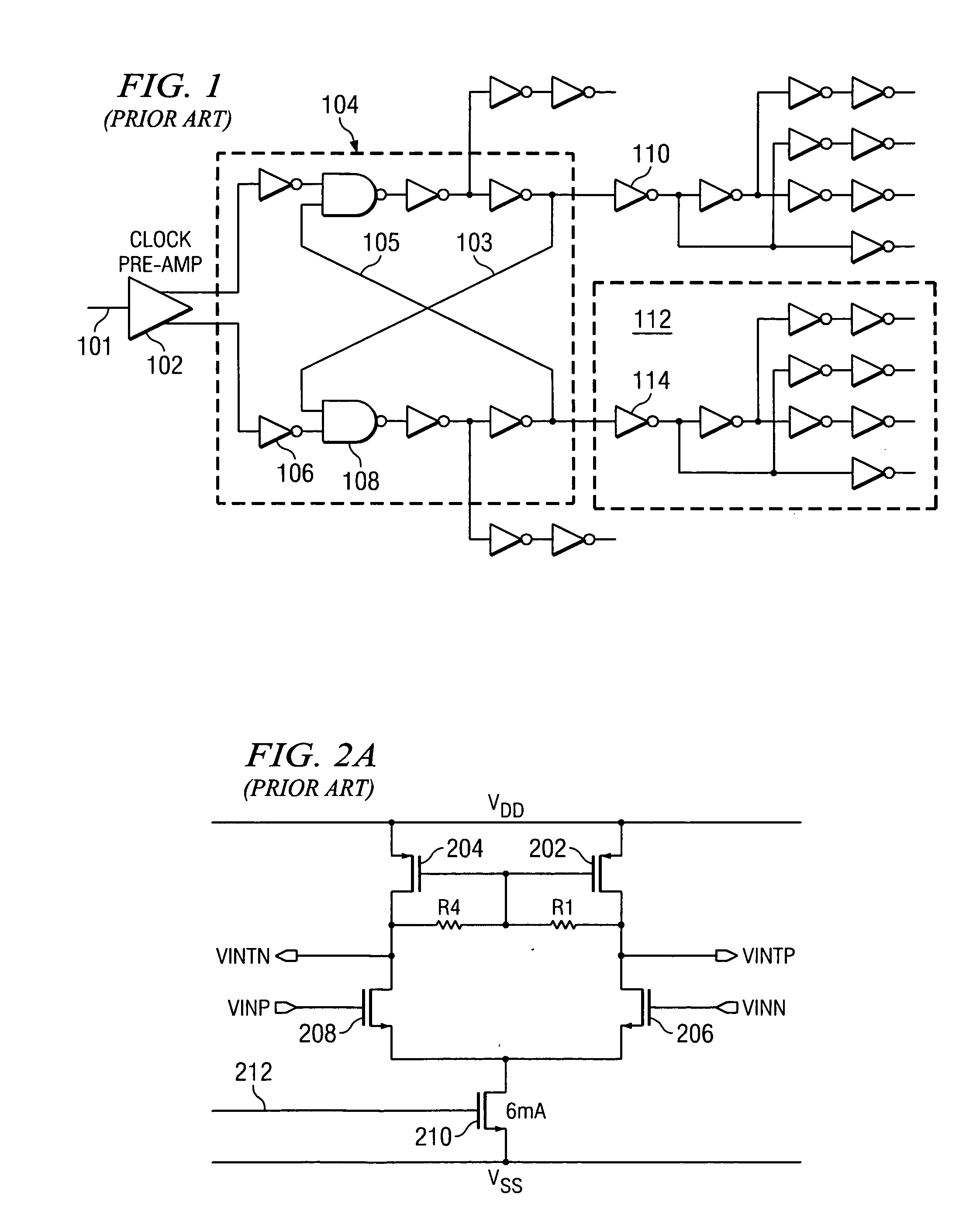Method and apparatus for improved clock preamplifier with low jitter
a clock signal and preamplifier technology, applied in the field of hardware implementation of clock synchronization circuits, can solve the problems of jitter being recognized as a fundamentally limiting factor of the accuracy of a signal processing sequence, noise contribution, system performance limitation, etc., and achieves little added timing jitter and rapid waveform transitions
- Summary
- Abstract
- Description
- Claims
- Application Information
AI Technical Summary
Benefits of technology
Problems solved by technology
Method used
Image
Examples
Embodiment Construction
[0040] The making and using of the presently preferred embodiments are discussed in detail below. It should be appreciated, however, that the present invention provides many applicable inventive concepts that can be embodied in a wide variety of specific contexts. The specific embodiments discussed are merely illustrative of specific ways to make and use the invention, and do not limit the scope of the invention.
[0041] Embodiments of the present invention will be described with respect to preferred embodiments in a specific context, namely a clock signal preamplifier comprising two complementary pairs of differentially coupled transistors, coupled in series between the circuit nodes of a bias voltage source, that produces a rectangular output waveform with very fast voltage transitions from a sinusoidal input voltage, and with very little timing jitter. The clock signal preamplifier preferably comprises bipolar devices and includes diode dampers comprising a totem-pole arrangement ...
PUM
 Login to View More
Login to View More Abstract
Description
Claims
Application Information
 Login to View More
Login to View More - R&D
- Intellectual Property
- Life Sciences
- Materials
- Tech Scout
- Unparalleled Data Quality
- Higher Quality Content
- 60% Fewer Hallucinations
Browse by: Latest US Patents, China's latest patents, Technical Efficacy Thesaurus, Application Domain, Technology Topic, Popular Technical Reports.
© 2025 PatSnap. All rights reserved.Legal|Privacy policy|Modern Slavery Act Transparency Statement|Sitemap|About US| Contact US: help@patsnap.com



